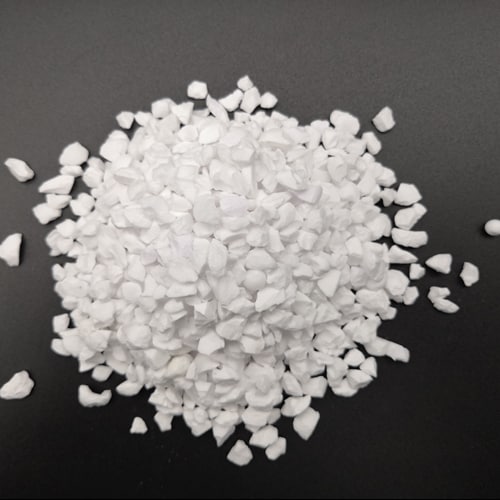
Description
Tabular alumina (also known as lamellar alumina) is a chemically pure aluminum oxide obtained by intensive sintering at temperatures above 1800 ° without the use of synthesizing impurities. In finished form tabular alumina is grains or powder. Particle parameters depend on a certain fraction.
Advantages:
The main advantages of tabular alumina over other materials are:
- chemical purity;
- reliability;
- mechanical resistance;
- the melting temperature reaches 2040 °C, which is a rather big indicator;
- resistance to thermal shock;
- significant wear resistance;
- low shrinkage temperature.
Scope of use:
Lamellar alumina has a closed porosity (more than 2.56%), thereby significantly increasing its thermal stability (about 97.8). Due to this, it has a wide application:
- as a raw material in the manufacture of fire-resistant concrete;
- as the main part of corundum masses, which are used in metallurgy for a special method of concrete processing of production apparatuses – shotcrete;
- casting in metallurgical production;
- production of glass, as well as cement and steel;
- petrochemical, ceramic industry;
- waste incineration in industry, etc.
Tabular alumina (also known as lamellar alumina) is a chemically pure aluminum oxide obtained by intensive sintering at temperatures above 1800 ° without the use of synthesizing impurities. In finished form tabular alumina is grains or powder. Particle parameters depend on a certain fraction.
Advantages:
The main advantages of tabular alumina over other materials are:
- chemical purity;
- reliability;
- mechanical resistance;
- the melting temperature reaches 2040 °C, which is a rather big indicator;
- resistance to thermal shock;
- significant wear resistance;
- low shrinkage temperature.
Scope of use:
Lamellar alumina has a closed porosity (more than 2.56%), thereby significantly increasing its thermal stability (about 97.8). Due to this, it has a wide application:
- as a raw material in the manufacture of fire-resistant concrete;
- as the main part of corundum masses, which are used in metallurgy for a special method of concrete processing of production apparatuses – shotcrete;
- casting in metallurgical production;
- production of glass, as well as cement and steel;
- petrochemical, ceramic industry;
- waste incineration in industry, etc.

